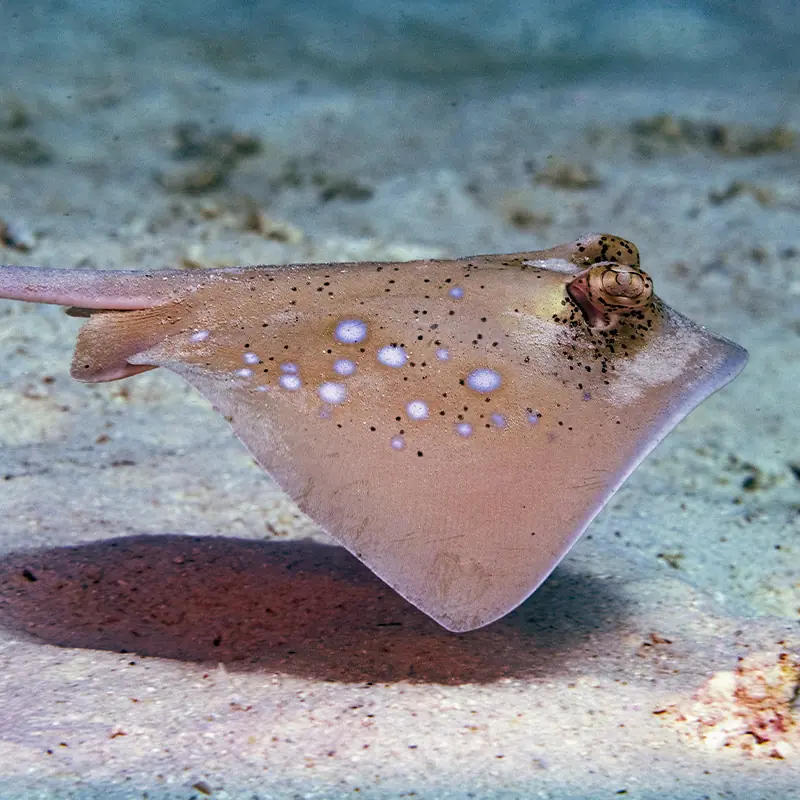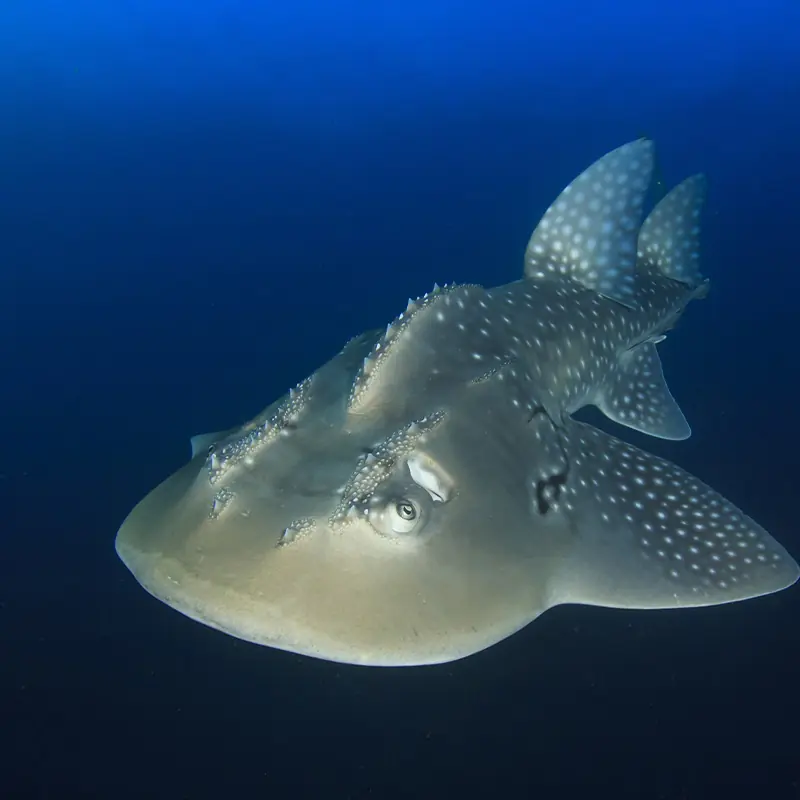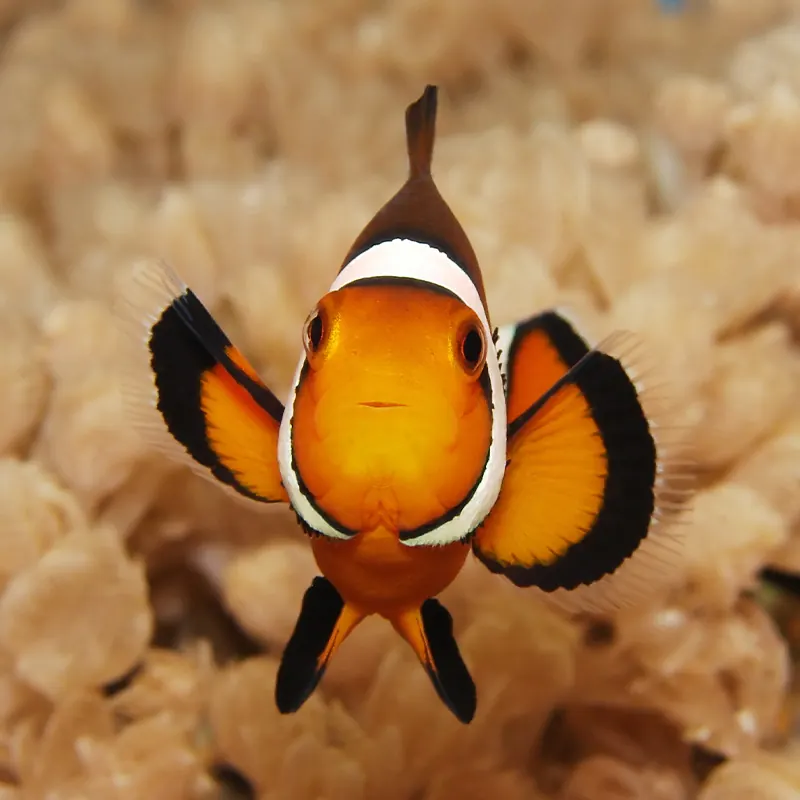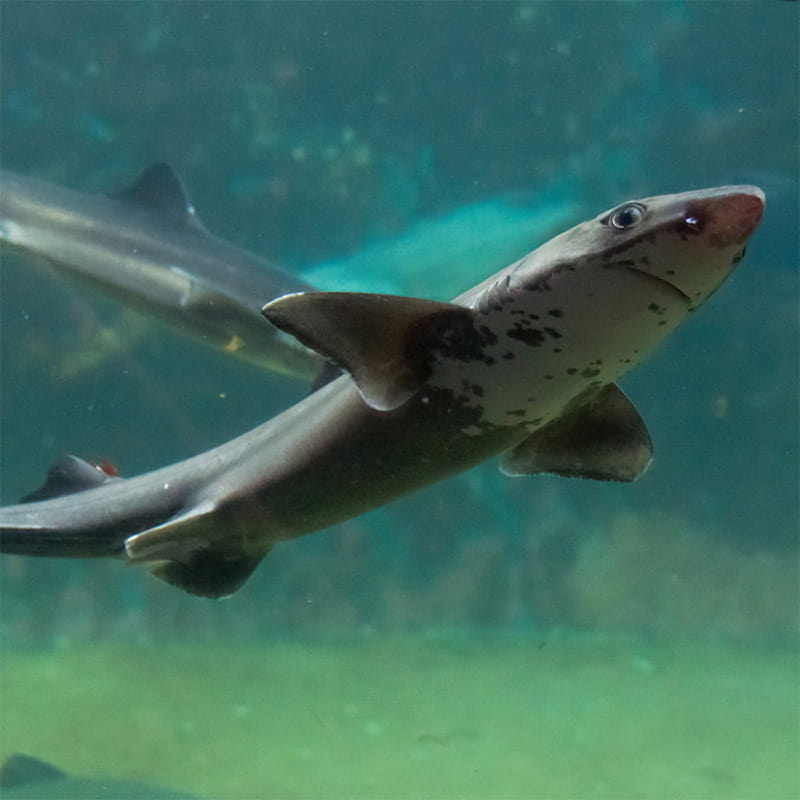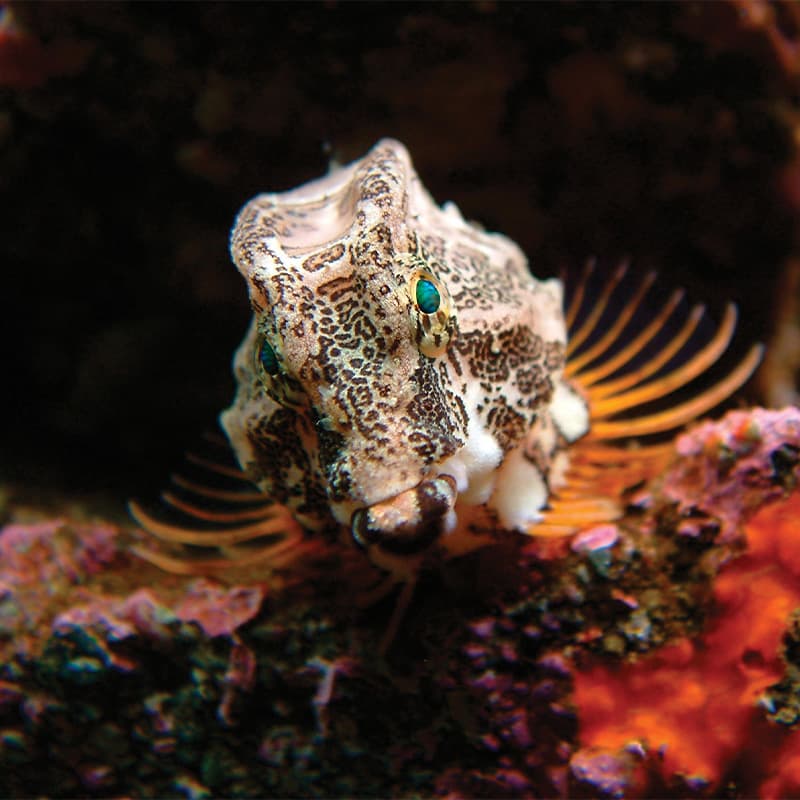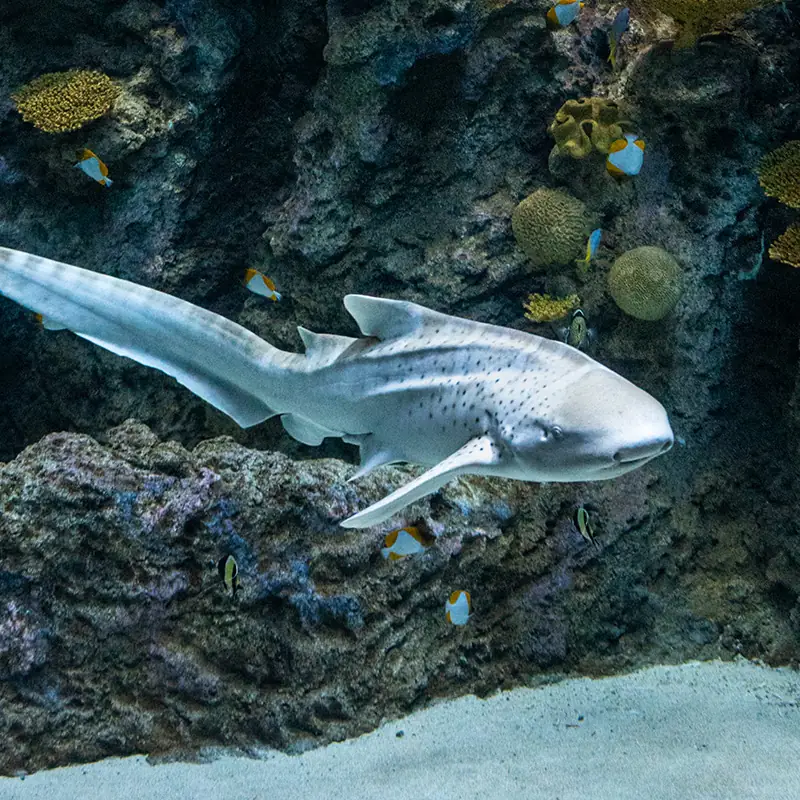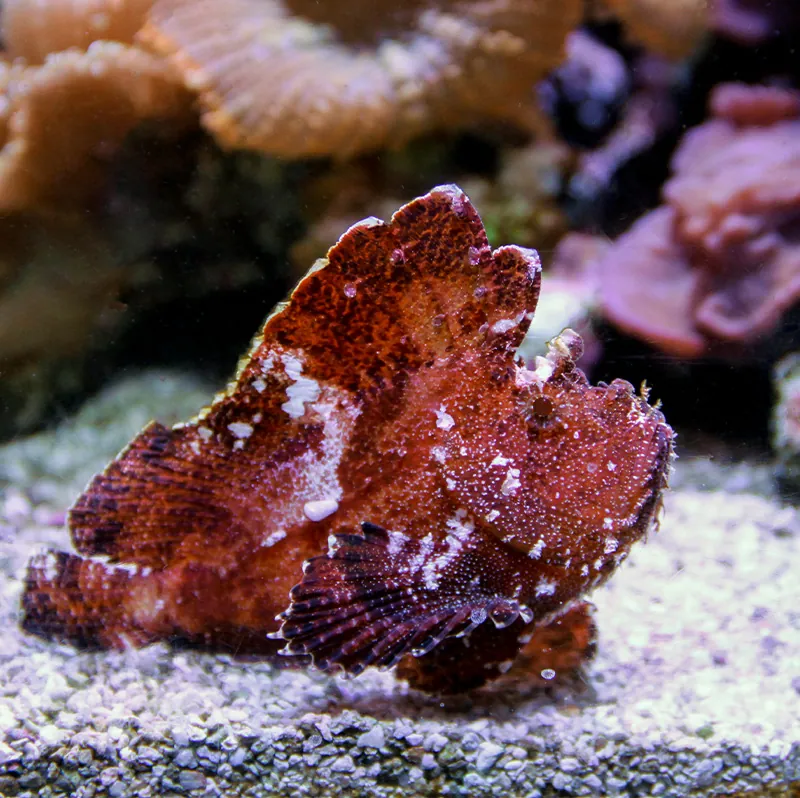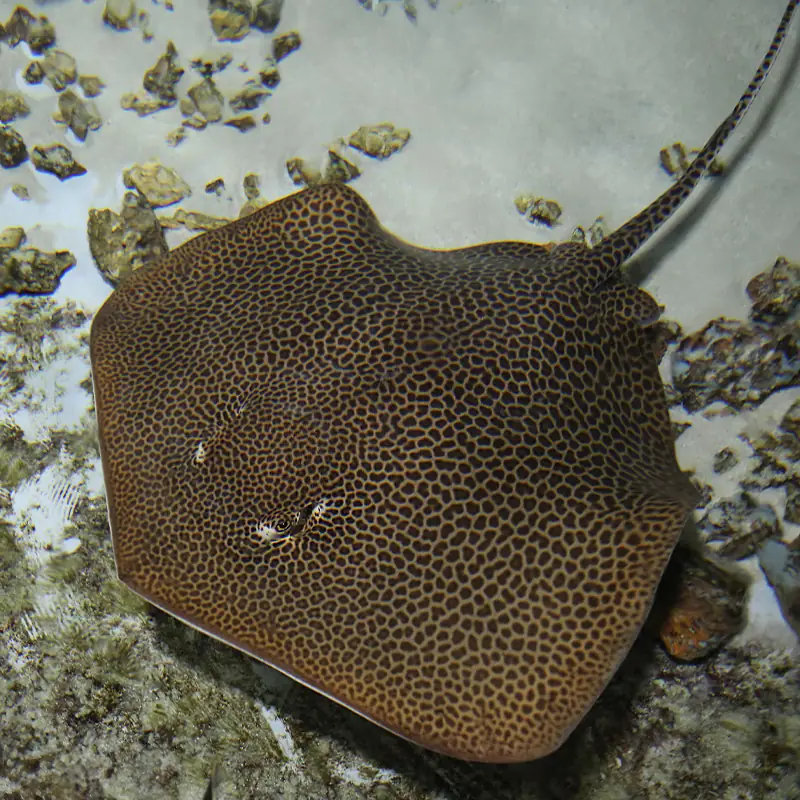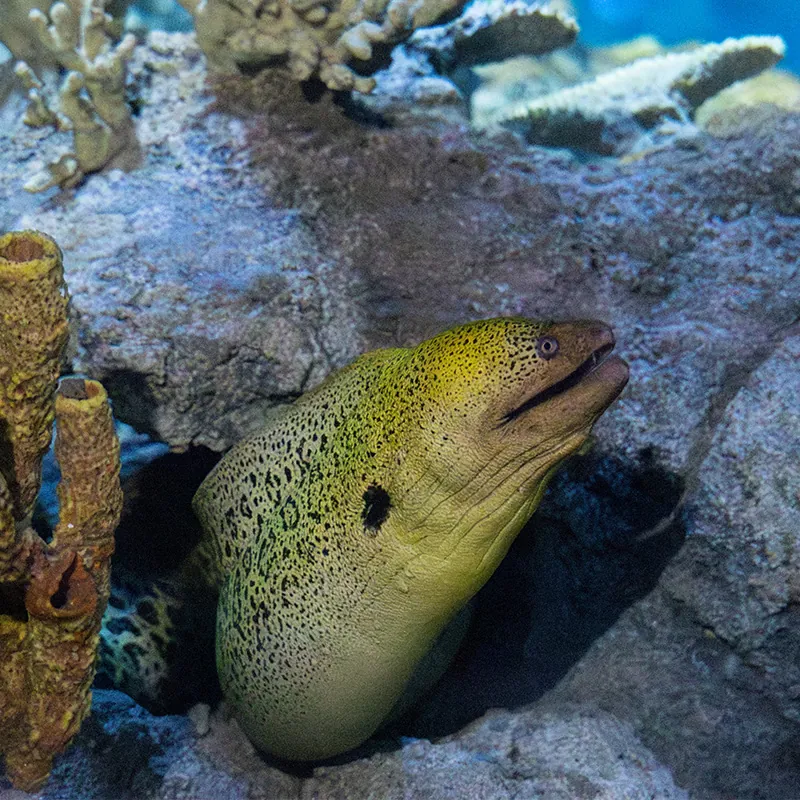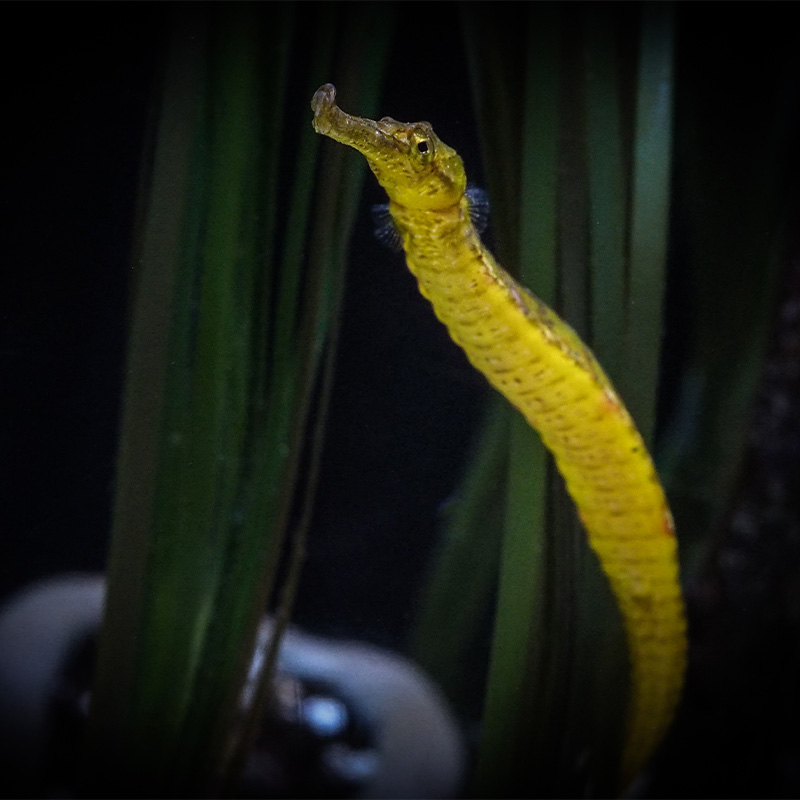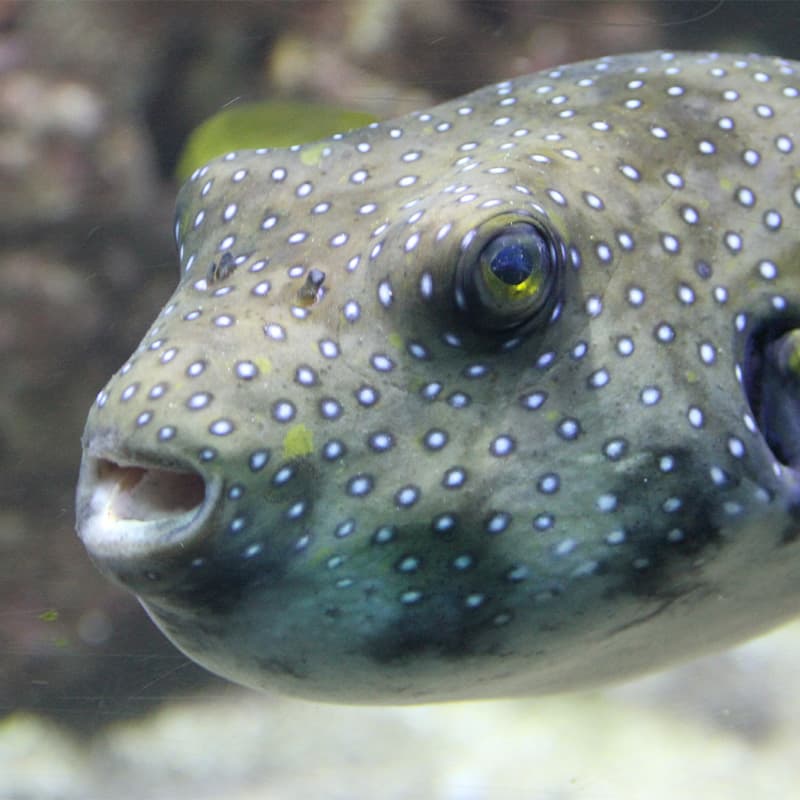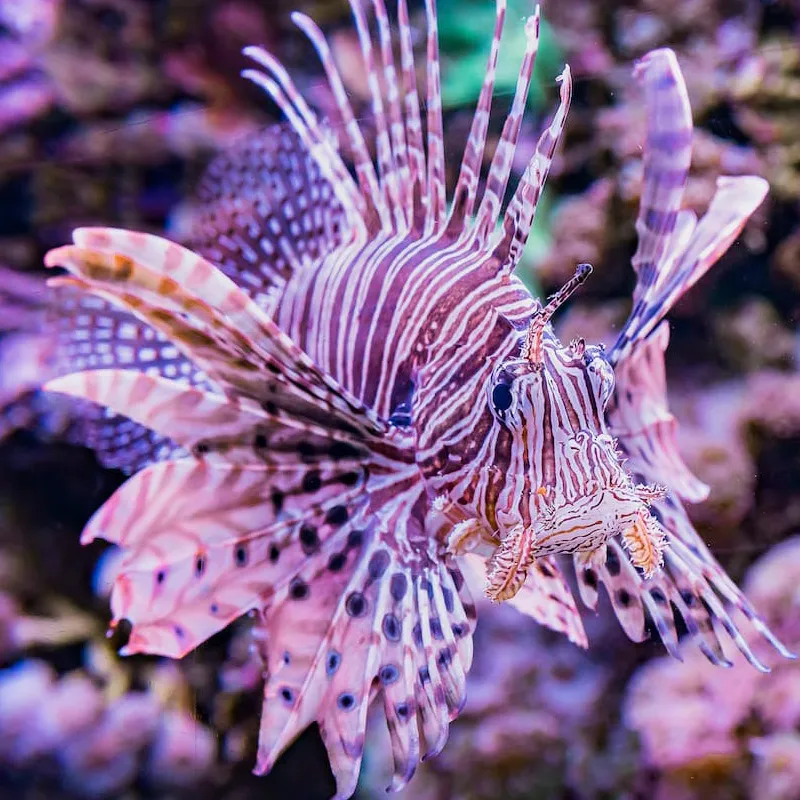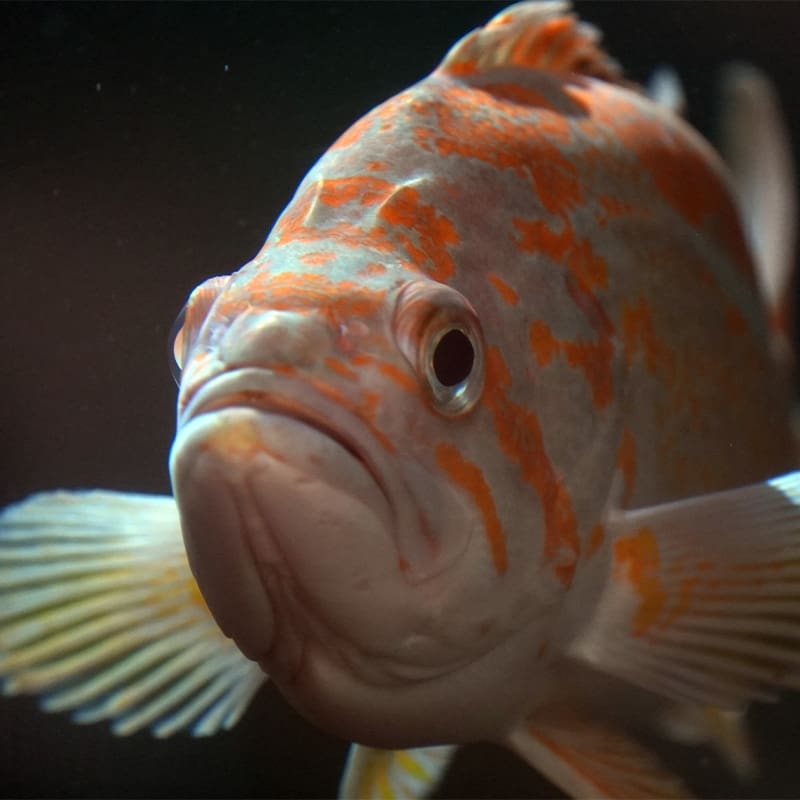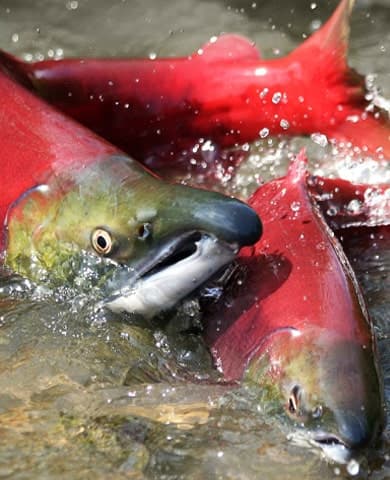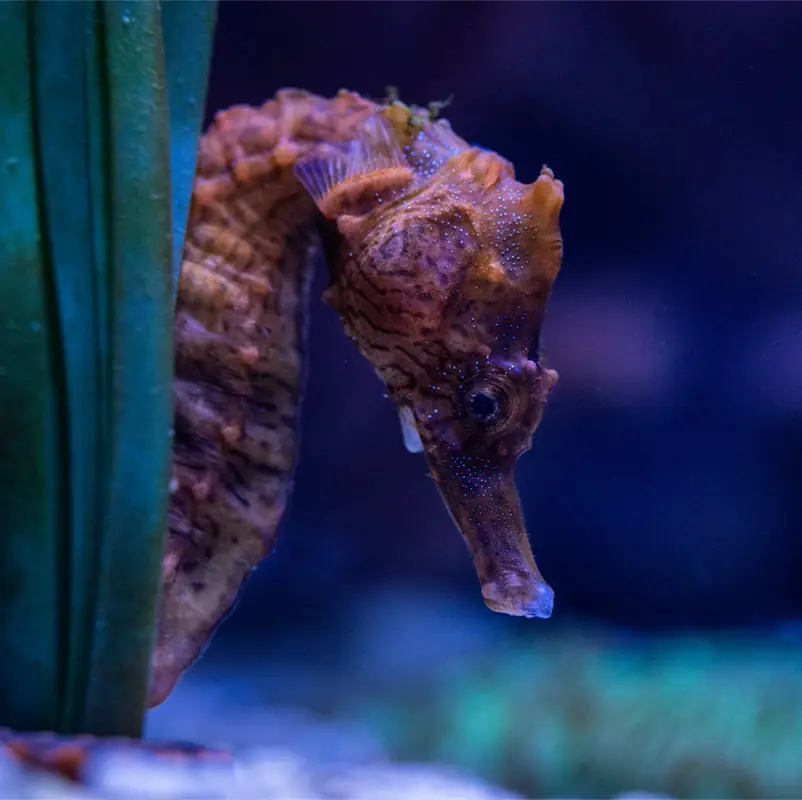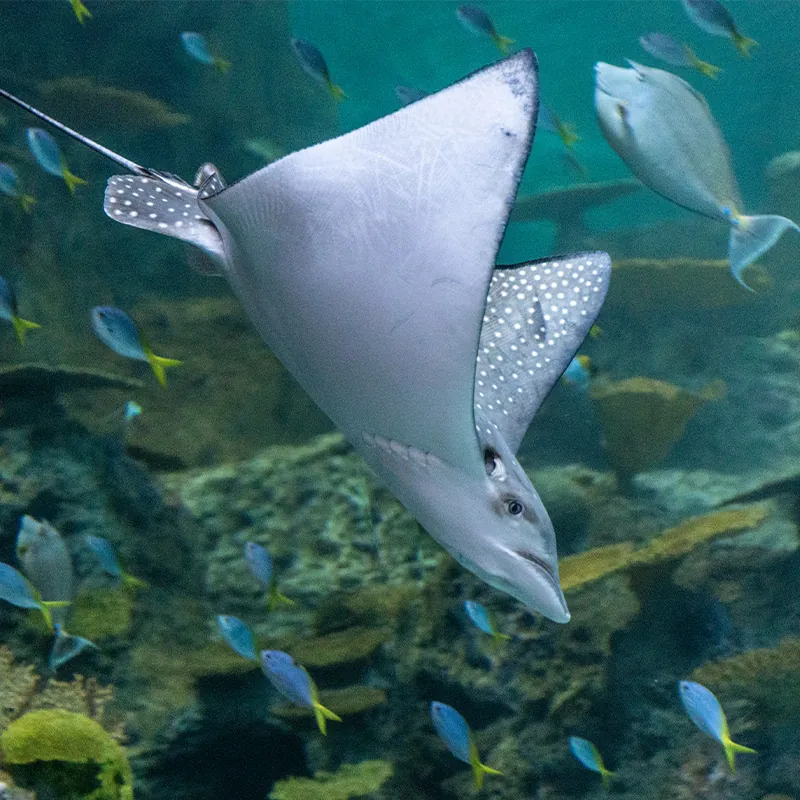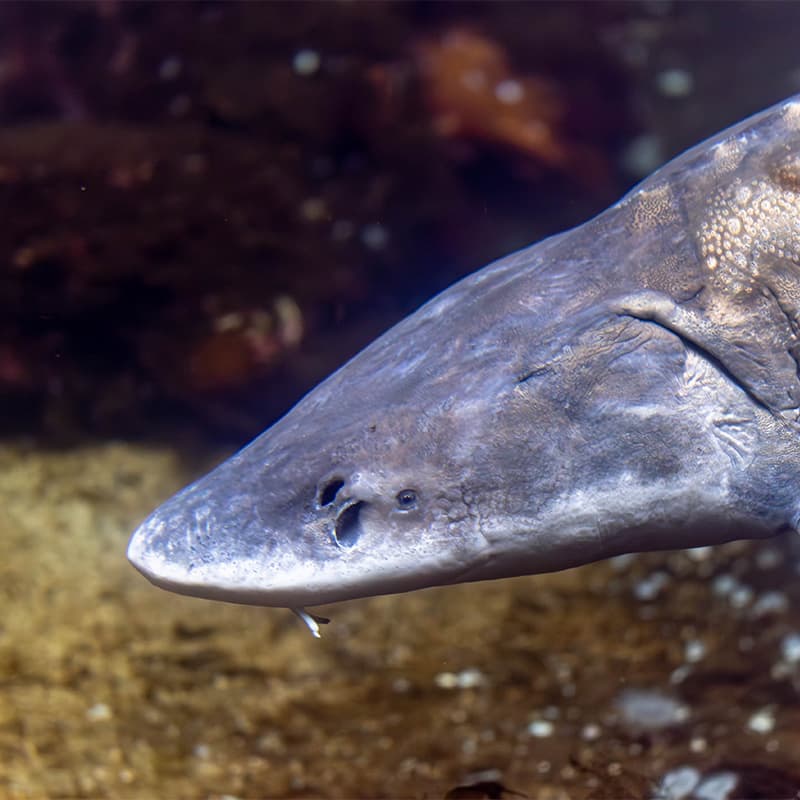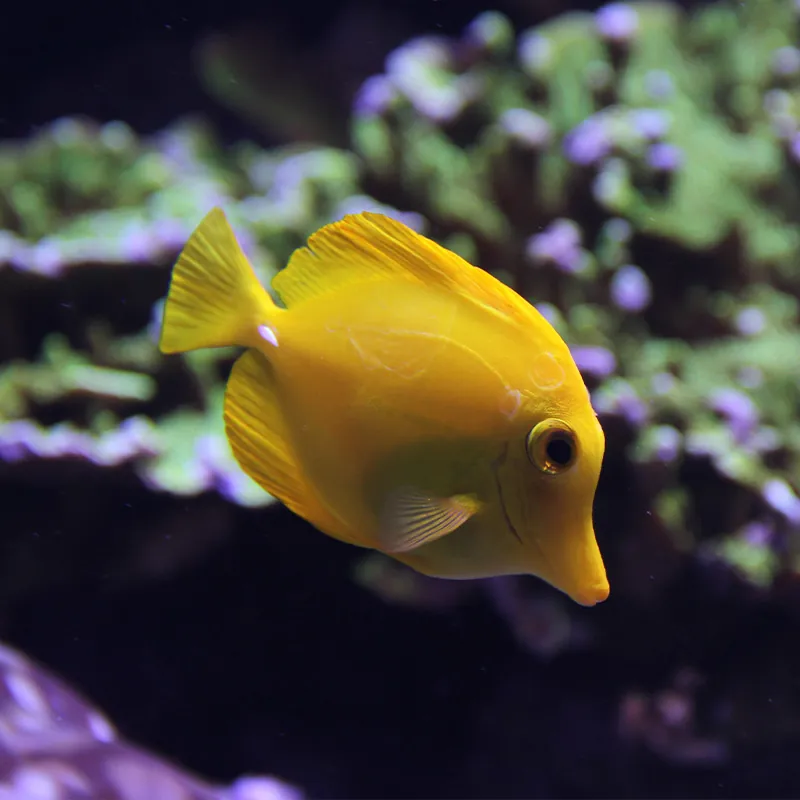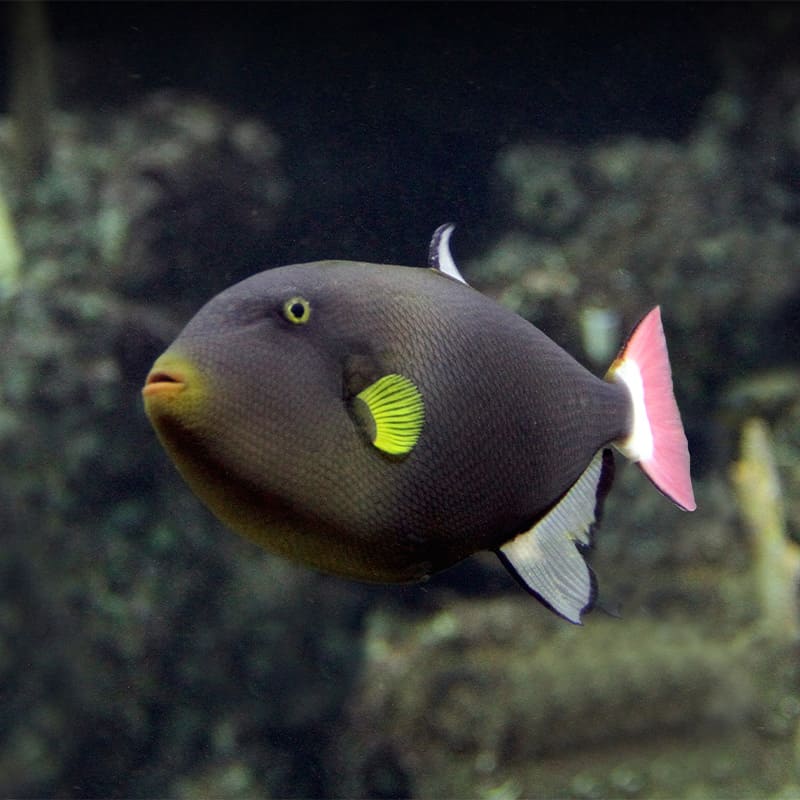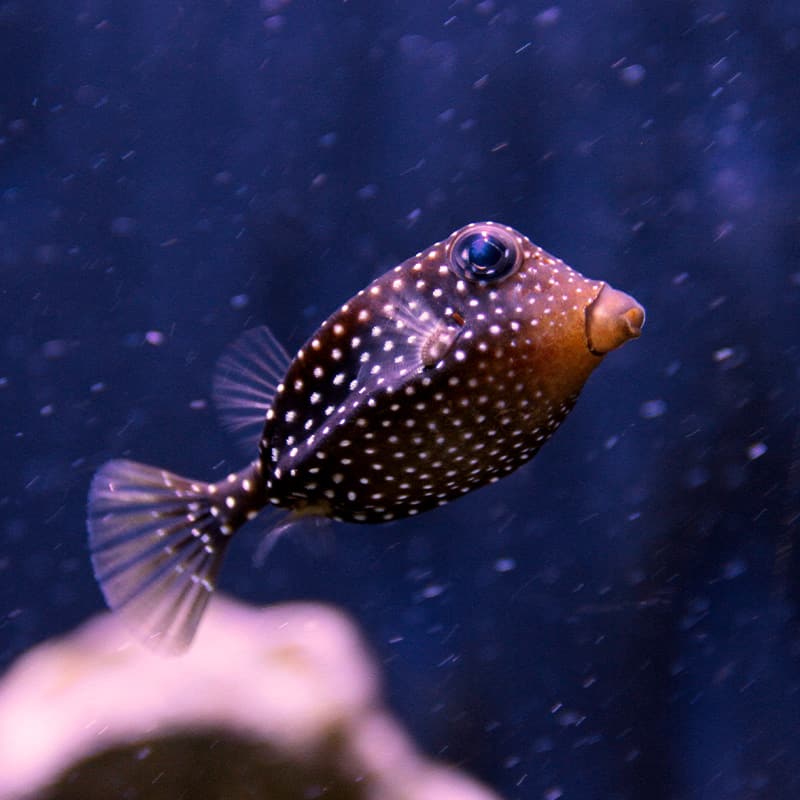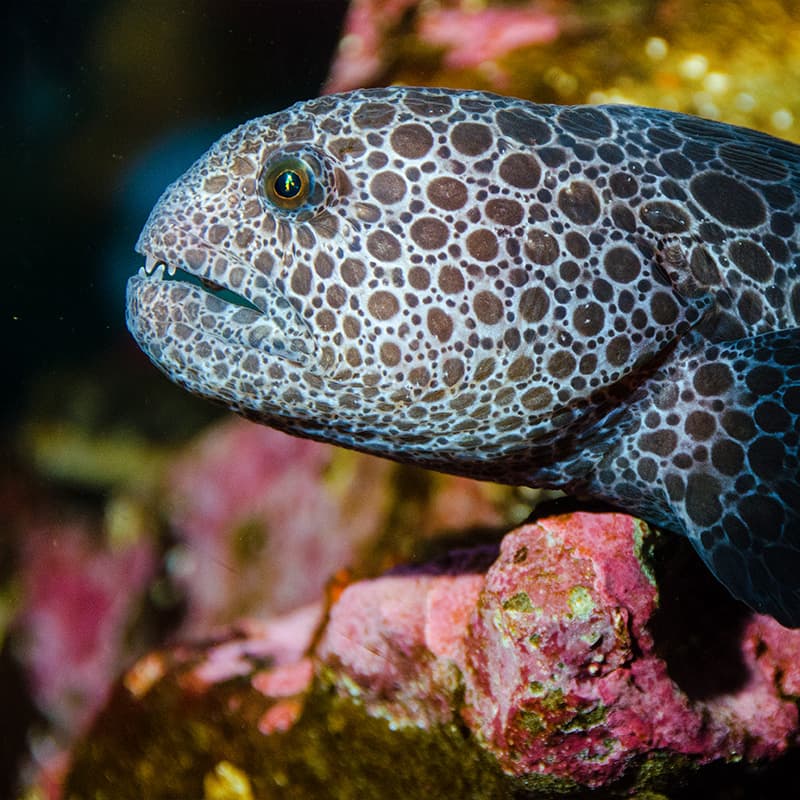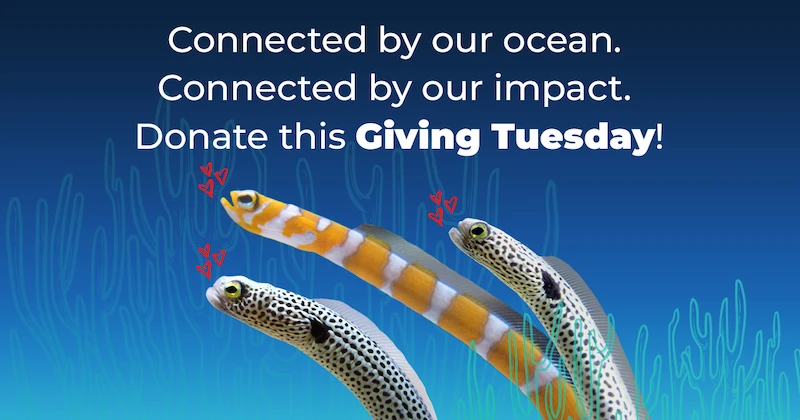- Fish
Blacktip reef shark
It's all in the name
Sometimes simple is best and this common name does the trick: these sharks do indeed have black tips on their fins and they’re found around coral reefs. Because they tend to spend their time in shallow waters, their top (dorsal) fin, with its namesake black tip, is sometimes visible above the surface. Keep reading to learn more about these fascinating animals!
At the Aquarium
- The Reef, Ocean Pavilion

Blacktip reef shark basics
Blacktip reef sharks, Carcharhinus melanopterus, are found in the waters of the Indo-Pacific Ocean and eastern Mediterranean Sea. They’re on the smaller side, typically growing to be 3–4 feet long (with a maximum length of 6.5 feet) and they live for 13 or more years. In Hawai‘i, some families see these sharks as their “aumakua,” or guardian spirit, and give them offerings of food in exchange for protection. Want to see eye to eye with a blacktip reef shark? Plan a visit to the Seattle Aquarium’s Ocean Pavilion!
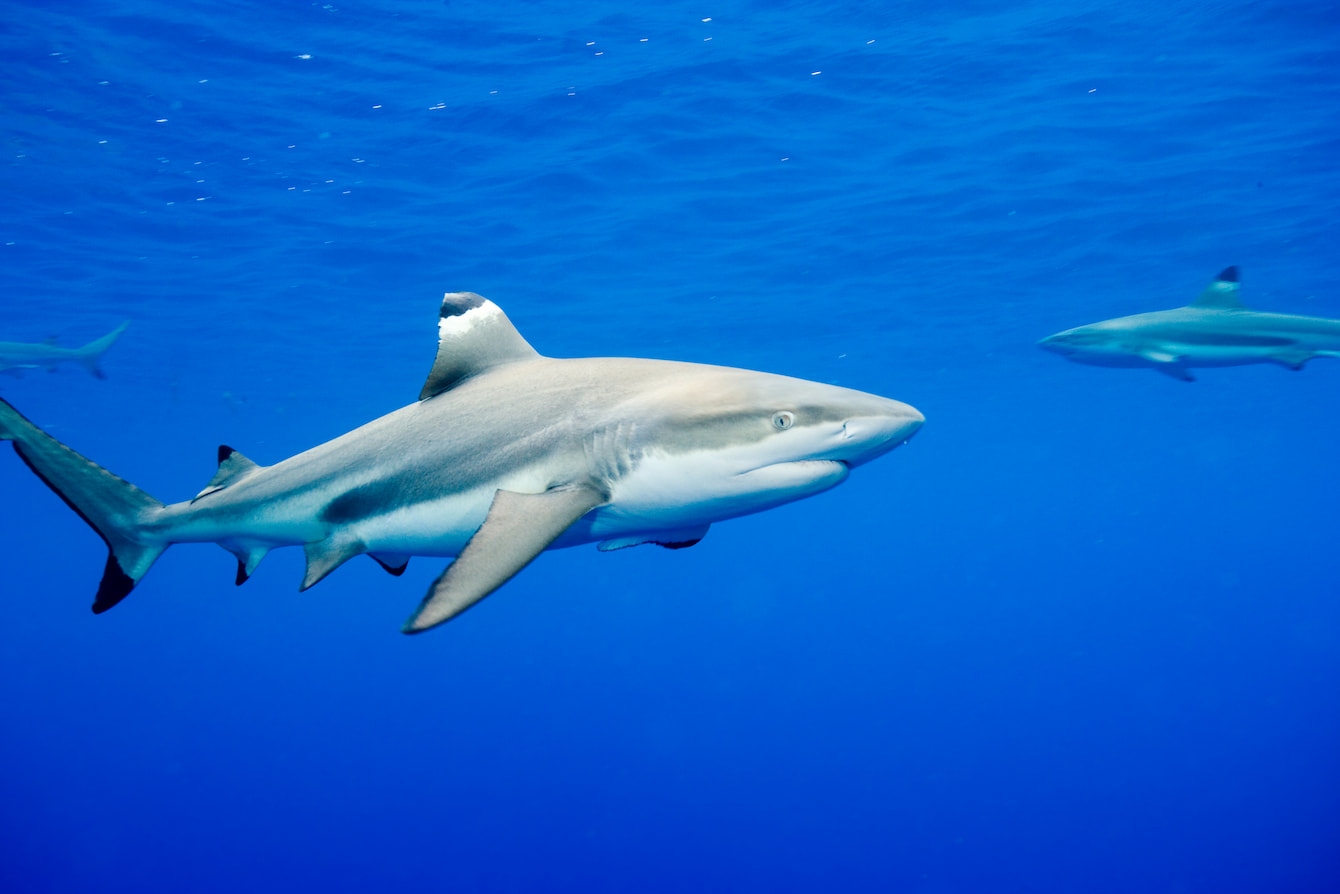
All for one, one for all
While solo hunting is the norm for most shark species, blacktip reef sharks are known to hunt in packs. They prefer to eat reef fish—but may also dine on cephalopods (including octopuses and squid), crustaceans (such as crabs) and mollusks (including clams, snails and mussels). If a hunting group comes upon a school of tasty fish, they may work together to corral their prey or herd the school toward the shore to make feeding easier.

Secret weapons
Blacktip reef sharks have some serious advantages when it comes to hunting. Like all sharks, they have specialized cells, called electroreceptors, in their snouts that allow them to sense the electric currents of nearby prey. And this species in particular has an excellent sense of smell: they can detect one part of fish flesh in about 10 billion parts of seawater! Even their appearance helps: they have a type of camouflage called countershading (a dark back and pale belly), which helps them blend in with the shimmery surface above and the dark seafloor below.
Viva la viviparous!
What was that word again? Like about 40% of all shark species, blacktip reef sharks are viviparous, which means they produce live pups instead of eggs. Female blacktips incubate their young for about a year before giving birth to a litter of two to four pups. The pups are largely independent at birth and reach maturity at about 4 years old for males; 7 for females. However, the long gestation period and small litter size makes this species especially vulnerable to population decline.
Conservation challenges
The factors described above aren’t the only challenges facing blacktip reef sharks. Listed as “Near Threatened” by the International Union for Conservation of Nature, they’re often caught and discarded as bycatch from other fisheries. And their habitat is being harmed by the effects of climate change—which, of course, also hurts the other animals living there, as well as the corals that form the reef. The good news is that each of us can make a difference for blacktip reef sharks, coral ecosystems and Earth’s one ocean. Visit our act for the ocean webpage to learn more!
Quick facts
Blacktip reef sharks typically grow to be 3–4 feet long and live about 13 years.
They’re known to hunt in packs to corral schools of their preferred prey: reef fish.
These sharks are viviparous, which means they give live birth.
